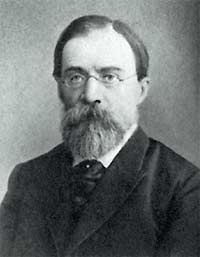<Back to Index>
- Physicist Aleksandr Grigorievich Stoletov, 1839
- Poet and Composer Philipp Nikolai, 1556
- Finance Minister of Germany Rudolf Hilferding, 1877
PAGE SPONSOR

Aleksandr Grigorievich Stoletov (Russian: Алекса́ндр Григо́рьевич Столе́тов; August 10, 1839 – May 27, 1896) was a Russian physicist, founder of electrical engineering, and professor in Moscow University. He was the brother of general Nikolai Stoletov.
Alexander Stoletov defended his doctoral dissertation in 1872 and became professor at Moscow University a year later. After defending his dissertation he became a renowned scientist world wide. He attended the opening ceremony of the physical laboratory in Cambridge in 1874, and represented Russia at the first World Congress of Electricity in Paris in 1881, where he presented his work on links between electrostatic and electromagnetic values.
Aleksandr
Stoletov was the first to establish a school of thought of world
importance. By the end of the 20th century his disciples had headed the
chairs of Physics in five out of seven major universities in Russia. His major contributions include pioneer work in the field of ferromagnetism and discovery of the laws and principles of the outer photoelectric effect. Achievements of Alexander Stoletov include: Magnetism (1871 – 1872) Photoelectric effect (1888 – 1891) Other